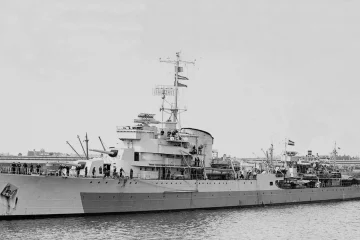The year 2006 marked the quatercentenary of the first known European charting of any part of the Australian coastline, when the Dutch mariner Willem Janszoon explored 300 kms of the north-west coast of Cape York Peninsula. He bestowed seven placenames, two of which, Moent and Dubbelde Ree have ambiguous meanings or referents. This paper attempts to resolve the enigmas behind these names by considering geographic, linguistic and historical evidence.
Moent is particularly challenging, with several possible linguistic sources, some more plausible than others. The most compelling evidence points to it either referring to the western entrance to Endeavour Strait, or a Dutch rendition of an Indigenous Australian word.
Dubbelde Ree is less problematic. The issue surrounding this name is whether its second element is meant to be Ree, an abbreviation of Reede (‘Roadstead’), or Rev, an abbreviation of Revier (‘River’). The search for the meaning of these placenames has provided credible evidence demonstrating that Janszoon explored the coastline in greater detail than has hitherto been thought, and that, in all likelihood, made contact with the local inhabitants.
More information on, and publications from Linguist Dr. Jan Tent


